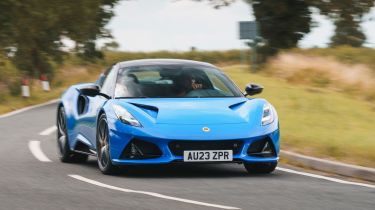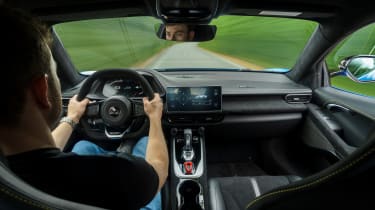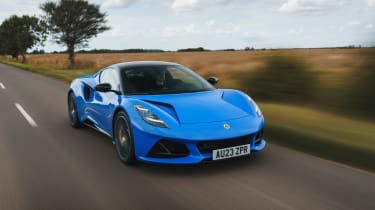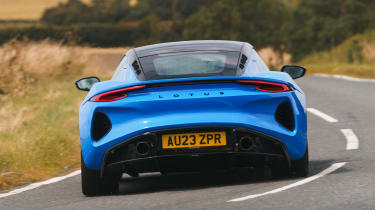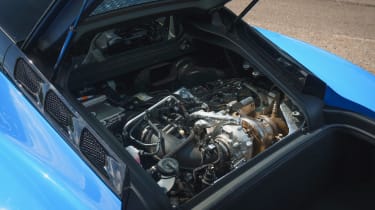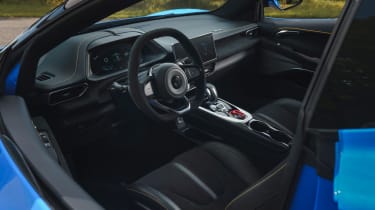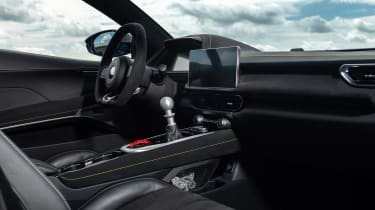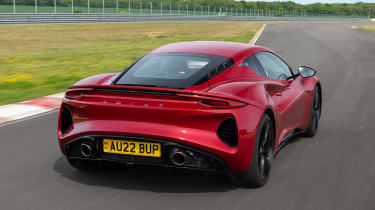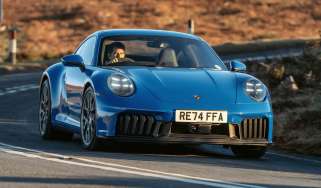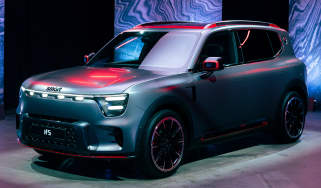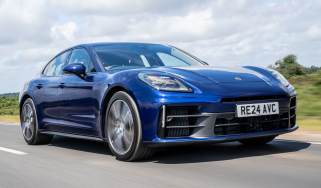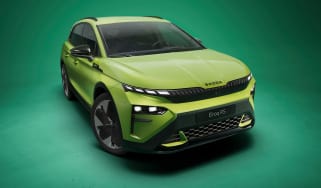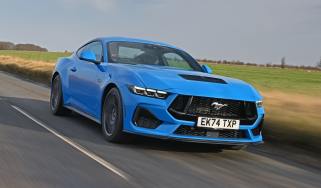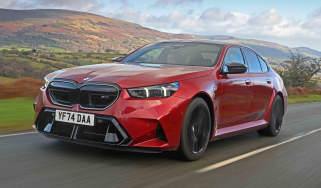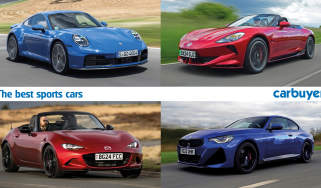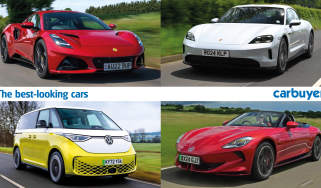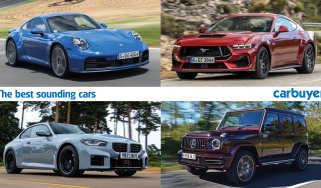Lotus Emira coupe review
“The Emira marks a big step on in terms of design and quality for Lotus, and it’s great to drive”
Pros
- Supercar styling
- Fantastic to drive
- Better built than previous Lotus models
Cons
- Not as involving as its predecessors
- Limited luggage space
- Fairly expensive
Verdict - Is the Lotus Emira a good car?
The Emira is an important car for enthusiasts as it’s the last petrol-powered Lotus before the company goes all-electric. While it’s no game-changer, Lotus has created something that isn’t just a fun, fluid car to drive, but that also marks a significant improvement in quality and ambience compared to its immediate predecessors. It’s a legitimate alternative to cars like the Porsche 718 Cayman and Alpine A110, and as Lotus develops the Emira and offers more driver-focused variants, we’d expect it to only get better from here.
Lotus Emira models, specs and alternatives
The Lotus Emira is about as close to a traditional sports car as you’ll find right now, and competes in a sector where the driver very much comes first. It’s a two-seat coupe – as opposed to its 2+2 (four-seat) Evora predecessor – with its engine in the middle and drive to the rear wheels. There’s also a manual gearbox option, which is increasingly rare in today’s market.
You can effectively split the Emira range into two parts, based on the two engines offered in the latest Lotus sports car. The range starts with a 2.0-litre turbocharged four-cylinder from Mercedes-AMG, while the other engine is a 3.5-litre Toyota-sourced V6, boosted by a supercharger like in the Evora. The AMG engine comes as standard with a seven-speed dual-clutch automatic gearbox while the V6 is offered with either a six-speed manual or six-speed automatic.
 The top 10 best sports cars in 2025
The top 10 best sports cars in 2025
For now, there’s currently only one trim line, the First Edition – a name which does what it says on the tin, denoting the initial run of Emiras leaving the Lotus production line in Norfolk. It’s well-equipped as standard, with 12-way adjustable electric and heated seats, a KEF audio system, 20-inch forged alloy wheels, a switchable exhaust sound, parking sensors, and more. Regular, non-First Edition Emira models should still be well equipped, with deliveries beginning around spring 2024.
Touring and Sport chassis options give owners a choice of a more relaxed setup aimed at road driving, or a stiffer suspension package biased towards those with a sportier driving style or the intention to take their car on track.
So the Emira is a serious sports car, but it’s far from the only one available. Its closest rival is arguably the Porsche Cayman, which has been the go-to choice in this class for several years. That car also offers a choice of four and six-cylinder engines and pricing is broadly similar too. From France meanwhile, there’s the Alpine A110, which is significantly lighter than either the Lotus or the Porsche, and a little smaller too. But is just as involving to drive, has its own unique style, and is priced lower than the Emira at its entry point.
MPG, running costs & CO2
It might seem surprising but sports cars don’t need to cost a fortune in fuel, repairs and consumables. When it comes to Lotus, the company’s focus on low weight helps, because a lighter car tends to be gentler on its tyres, on fuel, and on other parts.
Lotus hasn’t published full fuel economy figures for the Emira yet but we can still work out each model’s rough numbers from its CO2 emissions. We expect the 199g/km 2.0-litre model to achieve around 33mpg, while the more powerful 3.5 V6, with its 258g/km figure, will likely do just over 25mpg. Neither figure will convince you to trade in your Toyota Prius, but given the Emira’s near-supercar levels of performance, many owners will find that economy perfectly acceptable. It is, however, a little far behind the impressive Alpine A110’s 41.5mpg.
In terms of VED (or ‘road tax’ as it’s often known), the 2.0-litre car’s CO2 figure means a £1,500 first-year bill, while the V6 gets the full £2,600 charge as it sits in the highest tax band. This cost is rolled into the ‘on-the-road’ price however, so is unlikely to be of too much concern for potential buyers. All cars cost more than £40k, however, so you’ll pay a higher rate of more than £500 per year in years two to six, after which it defaults to the standard rate of just under £200.
Depreciation shouldn’t be too severe though – low-volume sports cars often do well in this, with plenty of used demand keeping prices high. Our figures for the V6 Emira suggest it could retain as much as 70% of its value after three years or 36,000 miles.
Insurance
Insurance group data is hard to come by for the Emira, but as a high-performance sports car, we’d expect it to sit in the same 40-50 group range as its closest rivals, the Porsche Cayman (groups 42-50), and Alpine A110 (groups 47-48).
Engines, drive & performance
Lotus doesn’t tend to miss with its sports cars. Given the Emira serves to replace two of the brand’s best ever models – the flyweight Elise roadster, and the more grown-up but still involving Evora – you’d expect it to marry many of their best characteristics, and in many ways it does.
It is undoubtedly an excellent-handling car, albeit one that no longer offers quite the same levels of driver interaction of its predecessors – possibly a result of the brand pushing the Emira more upmarket, where refinement and usability are just as important as racing car-like handling.
Ride quality has been another long-term Lotus hallmark – the British carmaker really knows how to build a car that doesn’t just corner well, but handles the UK’s lumps, bumps and potholes better than most too. And again, the Emira scores well here, with a ride quality that trumps its key Porsche Cayman rival, if not quite the Alpine A110 – after all, if any country can make better-riding cars than an English brand, it’s a French one.
As well as being an adept road car, the Emira is entertaining on a circuit, too, though it’s worth pointing out that you may want to opt for a car with the Sports chassis option and its stickier Michelin Cup 2 tyres to make the most of its abilities here. Also optional is a limited-slip differential – a component Lotus has only occasionally offered but is undoubtedly a useful traction aid in high-performance driving.
There are driver modes, which alter accelerator response and steering weight, but not the car’s suspension settings. You can feel the difference but it’s not profound; the Emira essentially drives well whatever specification and settings you opt for.
Petrol models
No diesels, hybrids, or electric cars here – just a pair of petrol engines. In fact, the last petrol engines you’re likely to see in a Lotus. The maker offers the choice of a turbocharged 2.0-litre four-cylinder bought in from Mercedes-AMG, and a 3.5-litre Toyota-sourced V6, supercharged and tuned by Lotus.
The four-cylinder makes 360bhp and 430Nm of torque, and is solely offered with an eight-speed, dual-clutch automatic gearbox. The V6 meanwhile is only a little more powerful, making 400bhp (actually with a little less torque, at 420Nm), but gets either a six-speed manual or six-speed automatic gearbox – and with the V6 making more interesting noises and offering a different character, many owners will surely choose to pair it with the manual.
As you might expect given the similar power and torque figures, there’s not a lot between the engines in terms of outright performance. The V6 is marginally the quicker of the pair – get the launch right and it’ll sprint from 0-60mph in 4.2 seconds with the manual gearbox, while the four-cylinder with its dual-clutch automatic covers the same metric in 4.3 seconds. The automatic V6 is a touch slower, at 4.6 seconds, and it has a lower top speed too of 169mph, to the 180mph achieved by both the 2.0-litre car and the manual V6.
Neither engine is short of response and both give you a real shove in the back under hard acceleration, while both settle down at motorway speeds too. Strong performance here doesn’t come at the expense of refinement.
Interior & comfort
If there’s one area the Emira has made an enormous leap compared to Lotus models from the past, it’s the interior. You can tell Lotus has worked particularly hard on quality, design and quality inside, in order to compete at the level its price now demands. The Emira’s cabin looks and feels better than any previous Lotus, as well as promising superior build quality and greater comfort.
Lotus has kept the layout simple, so it shouldn’t be too off-putting to those who admired the brand’s previous, more stripped-back models. Yet it includes the kind of creature comforts you’d hope for from a modern sports car. The detailing is good – such as the bomb-switch starter button, the mesh letting you see the gearshift’s inner workings, and the TFT instrument display – as is the driving position, and there’s a proper infotainment system too.
Those excellent ergonomics and improved refinement mean driving the Emira over longer distances is no great hardship either, provided you can find enough space for your belongings; we’ve written in more detail about the Emira’s practicality and boot space below.
Infotainment and navigation
The Emira uses a 10.25-inch display for its infotainment, mounted in the middle of the dashboard. It’s not cutting-edge, but it’s simple and intuitive to use, includes Apple CarPlay and Android Auto, while audio is handled by a KEF system – a British brand Lotus is also working with on the electric Eletre SUV. Lotus gets bonus points for not being tempted to use the screen to control the heating and air conditioning – you still get physical buttons and knobs for that.
Practicality & boot space
Owners don’t tend to choose compact two-seat sports cars for their practicality, but equally, these kinds of vehicles are used for high days and holidays, and being able to pack enough luggage for a long weekend is quite helpful.
The Emira is certainly no stripped-back lightweight like the old Elise, so there’s a degree of practicality here. Unlike the old Evora, the Emira is a strict two-seater, and without squeezing in a pair of tiny rear seats, cabin space has grown for the driver and passenger. It’s relatively easy to get into and out of too, which hasn’t always been a given with Lotus products, though a Porsche Cayman still makes things a little easier, and its cabin also feels more open and airy. As is often the case with Lotus, the Emira’s forward visibility is excellent.
Boot space
Lotus owners are used to packing light, which is just as well as the Emira has only one boot - rather than a pair in the nose and tail like you’ll find in the Alpine A110 or Porsche Cayman. That said, the Lotus’s 151 litres is still more than the Alpine will hold, if somewhat down on the Cayman. You can stash more luggage behind the Emira’s front seats too, where the old Evora’s tiny plus-two rear seats used to be. There are several smaller storage areas as well, from a pair of cupholders, to door bins that will hold a 500ml bottle, and a storage tray under the centre console.
Reliability & safety
The Emira is too new to give us a real handle on its reliability so far, and Lotus products tend to sell in small numbers so they don’t often appear in our annual Driver Power customer satisfaction surveys either.
It’s fair to say that Lotus has had a mixed reputation for reliability in the past, but it has undoubtedly improved over time, in part thanks to the use of dependable Toyota mechanicals in its models for the last few decades, while Lotus has made big strides in build quality too.
There’s a mix of Japanese and German engines in the Emira now, and neither option should prove too troublesome. It’s fair to expect some teething issues from a new model like the Emira, but being a relatively simple sports car rather than tech-filled luxury model may count in its favour.
Lotus offers a three-year warranty on the Emira, matching its rivals from Porsche and Alpine in basic coverage, though delve into the small print and you’ll notice that while track days are covered, competitive use – including hill climbs, a long-time staple of Lotus owners – are not. Servicing is scheduled for every 12 months or 10,000 miles, whichever comes sooner. Lotus also offers fixed-price service plans, with a first-year service costing around £400, and just over £700 in year two.
Safety
Sports cars like the Emira don’t tend to meet a deformable barrier in independent crash testing, so don’t expect a star rating from Euro NCAP any time soon. But the Emira does have a strong aluminium structure, while tech like LED headlights and traction control are there to help the driver in everyday driving.
Which Is Best?
Cheapest
- Name2.0 First Edition 2dr DCT
- Gearbox typeSemi-auto
- RRP£84,900
Most Economical
- Name2.0 First Edition 2dr DCT
- Gearbox typeSemi-auto
- RRP£84,900
Fastest
- Name2.0 Turbo SE 2dr DCT
- Gearbox typeSemi-auto
- RRP£92,905
